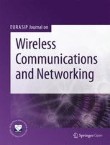To exploit the huge potential market value of the Internet of Things (IoT), connecting and understanding objects rather than users have been driving the new waves of technological development. A large number of sensors and cameras are scattered in every corner of the city to collect different types of data. The sensed data is then transmitted to different management departments or control centers in vertical industries through the Internet to improve service delivery. IoT applications exist in multiple market verticals, such as healthcare, manufacturing, utilities, and agriculture. Generally, IoT systems can be divided into commercial IoT and industrial IoT.
The service quality requirements differentiate significantly the commercial IoT and industrial IoT. For example, the commercial IoT usually demands only a few years of service life for commercial equipment, while the industrial IoT may need to connect hundreds of data points to support the operation of expensive industrial equipment for decades. When designing an IoT architecture, these basic differences have to be considered. 6G will become a key network platform on which information can be initiated, transmitted, processed, and used. 6G IoT emphasizes compatible network architecture, improved network service provision, effective use of data and information, as well as close interaction with commercials. In particular, 6G has introduced advanced technologies such as artificial intelligence to make IoT systems smarter.
That is to say, the target IoT system itself is going to be intelligent and relies on ubiquitously available computing resources. Smart network computing is thus promoted by researchers, in a bid to pack a range of emerging technologies, such as mobile edge computing, network function virtualization, artificial intelligence, network slicing etc. Smart network computing aims at providing both commercial IoT and industrial IoT applications with the resources required. In other words, one network platform should satisfy multiple types of IoT use cases.
To meet the trends mentioned above, we propose this special issue to help both academic and industrial communities understand the recent research progress and emerging technologies in commercial and industrial IoT networking.
Potential topics include but are not limited to:
- Emerging trends of commercial and industrial IoT
- Advanced sensors and sensing techniques for commercial and Industrial IoT
- Machine learning approaches for smart IoT network computing
- New concepts, theories, and protocols for smart IoT network computing
- QoS provisioning for diverse commercial and industrial IoT applications
- Reliability and fault tolerance for critical commercial and industrial IoT
- Performance modeling and analysis for intelligent commercial and industrial IoT network
- Innovative infrastructure and testbeds for commercial and industrial IoT network
Deadlines
Manuscript Submission Deadline: May 31, 2022
Publication Date: 2022
Lead Guest Editor:
Bo Rong, Communications Research Centre Canada
Guest Editors:
Ruidong Li, Kanazawa University, Japan
Jon Montalban, University of the Basque Country, Spain
Michel Kadoch, École de technologie supérieure, Université du Québec, Canada
Osamah S. Badarneh, German-Jordanian University, Jordan
Submission Guidelines:
Authors should prepare their manuscript according to the guide for authors available from the online submission page of the EURASIP Journal on Wireless Communications and Networking at https://jwcn-eurasipjournals.springeropen.com/. Authors should select "Intelligent Systems and Smart Network Computing for Commercial and Industrial IoT" in the submission process. Submitted papers must contain original work, which has neither been previously published nor it is currently under review by another journal or conference. Previously published or accepted conference papers must contain at least 50% new material to be considered for the special issue. All papers will be peer-reviewed by at least two independent reviewers. Requests for additional information should be addressed to the corresponding guest editor. Submissions will also benefit from the usual advantages of open access publication:Rapid publication: Online submission, electronic peer review and production make the process of publishing your article simple and efficient. High visibility and international readership in your field: Open access publication ensures high visibility and maximum exposure for your work - anyone with online access can read your article. No space constraints: Publishing online means unlimited space for figures, extensive data and video footage. Authors retain copyright, licensing the article under a Creative Commons license: articles can be freely redistributed and reused as long as the article is correctly attributed. For editorial inquiries please contact vincent.salvo@springer.com. Sign up for article alerts to keep updated on articles published in EURASIP Journal on Wireless Communications and Networking - including articles published in this special issue!
